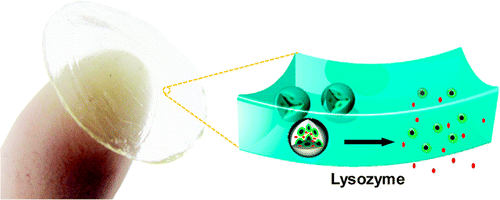Unfortunately, there’s not much detail about the nanoparticle-based drug delivery of what I gather is a form of cannabis useful in the treatment of glaucoma in this April 16, 2015 news item on Azonano,
InMed Pharmaceuticals Inc., a clinical stage biopharmaceutical company that specializes in developing safer, more effective cannabinoid-based therapies, today announced that it has been awarded a grant to further develop the Company’s proprietary nanoparticle-based delivery system for their leading drug candidate CTI-085 for glaucoma.
An April 15, 2015 InMed Pharmaceuticals press release goes on to describe the lead researcher and her past experience, as well as, providing a ‘we’re thrilled and will do wonderful things with this money’ quote,
The Mitacs grant was awarded to Dr. Maryam Kabiri, Ph.D., a researcher with extensive experience in developing nanoparticle-based delivery system. Dr. Kabiri will be working with Prof. Vikramaditya G. Yadav, whose research focuses on metabolic & enzyme engineering and customize novel biosynthetic enzymes that can convert biomass-derived feedstock into better fuels, pharmaceuticals and value-added chemicals. In conjunction with InMed, the Mitacs grant will be utilized to develop a novel delivery system for glaucoma therapy.
Dr. Sazzad Hossain, Chief Scientific Officer, states, “We are pleased to have met the Mitacs funding criteria for the advancement of our proprietary glaucoma delivery system. Not only does this bring us closer to our goals of initiating our Phase 1 trial, but it furthers our business development strategy of having a proprietary delivery system that can be licensed with existing drugs endangered by patent expiration. This “therapy extension” strategy used by drug makers can be a valuable asset to InMed upon successful completion of the program. Additionally, the incorporation of an existing medicine into a new drug delivery system can significantly improve its performance in terms of efficacy, safety, and improved patient compliance.”
About Mitacs
Mitacs is a national, private not-for-profit organization that develops the next generation of innovators with vital scientific and business skills through a suite of unique research and training programs, such as Mitacs-Accelerate, Elevate, Step, Enterprise and Globalink. In partnership with companies, government and universities, Mitacs is supporting a new economy using Canada’s most valuable resource – its people.
For more information on Mitacs, visit www.mitacs.ca.
About InMed
InMed is a clinical stage biopharmaceutical company that specializes in developing cannabis based therapies through the Research and Development into the extensive pharmacology of cannabinoids coupled with innovative drug delivery systems. InMeds’ proprietary platform technology, product pipeline and accelerated development pathway are the fundamental value drivers of the Company.
As is becoming increasingly common, there’s a major focus on business even from Dr. Sazzad Hossain, the company’s chief scientific officer who might be expected to comment on the science. Business used to be the purview of the chief executive officer, the chief financial officer, the chief operating officer, and/or the chief marketing officer.
I did manage to dig up a bit of information about InMed which was called Cannabis Technologies until fairly recently. Daniel Cossins in a Dec. 1, 2014 article for The Scientist describes the current ‘cannabis pharmaceutical’ scene. The dominant player on the scene is a UK-based company, GW but InMed merits a mention,
Leading scientists were consulted, including biotech entrepreneur Geoffrey Guy, who had previously shown interest in developing cannabis-based medicines. The government granted Guy’s company, GW Pharmaceuticals, a license to grow cannabis plants. Guy’s idea was to generate strains rich in particular cannabinoid compounds that act on the nervous system, then test the effects of various cannabinoid combinations on MS and chronic pain. “It was a case of patient experience guiding scientific exploration,” says Stephen Wright, director of research and development at GW.
In 2010, the company announced the UK launch of its first cannabinoid-based product: Sativex, an oral spray for the treatment of MS spasticity, became the world’s first prescription medicine made from cannabis extracts. Sativex is now approved for use by MS patients in 24 countries, including France, Germany, Italy, and Australia. GW has partnered with Bayer and Novartis to market the product. It has also signed up with the American branch of Japanese pharma company Otsuka to commercialize the drug in the U.S., where it is currently in Phase 3 clinical trials for treating MS spasticity and cancer pain. Earlier this year, GW’s share price surged when the US Food and Drug Administration (FDA) granted orphan status to its cannabis-derived antiseizure drug Epidiolex, meaning it will be fast-tracked through clinical trials.
The company’s success is blazing a trail. In recent years, a handful of North American companies have set out on a similar path toward producing cannabis-derived pharmaceuticals. At least one company is developing candidates based on synthetic cannabinoids — of which two are already on the market in the U.S. — while several others are extracting chemical cocktails from the plant. They’re all hoping to capitalize on the anticipated growth of the cannabis pharma space by taking advantage of mounting data on the plant’s therapeutic effects.
“Frankly, we looked at GW and saw that the shift toward pharmacological development of marijuana is already happening,” says Craig Schneider, president and CEO of InMed Pharmaceuticals (formerly Cannabis Technologies), a Vancouver-based biotech focused on pharmaceutical marijuana. “We see the likes of Otsuka, Novartis, and Eli Lilly diving into the space, and we want to be part of that.”
Cossins’ article goes on to discuss cannibinoids providing a tutorial of sorts on the topic. Meanwhile following on the business aspects of this story, Yahoo Finance hosts a June 25, 2014 article from Accesswire, which provides some insight into the company, which was still being called Cannabis Technologies, and its GW aspirations,
Cannabinoids are a diverse set of chemical compounds that act on cannabinoid receptors on cells that repress neurotransmitter release in the brain. While tetrahydrocannabinol (“THC”) and cannabidiol (“CBD”) are the two most popular cannabinoids, there are at least 85 different cannabinoids isolated from cannabis exhibiting various effects that could prove therapeutic.
GW Pharmaceuticals plc (GWPH), a biopharmaceutical company focused on discovering, developing, and commercializing novel therapeutics from its proprietary cannabinoid platform, has become the cannabinoid industry’s poster child with a ~$1.4 billion market capitalization and promising data from the clinic for the treatment of Dravet syndrome and Lennox-Gastaut syndrome.
In this article, we’ll take a look at another opportunity in the sector that many are calling the “junior GW” [InMed Pharma, formerly Cannabis Technologies], focused on leveraging its proprietary Cannabinoid Drug Design Platform to rapidly develop cannabinoid-based therapies.
…
Fully Integrated Platform Play
Cannabis Technologies Inc. (CSE:CAN) (CANLF) is a biopharmaceutical drug discovery and development company focused on cannabinoids that has been dubbed by many as the “Junior GW” in the space. By leveraging its proprietary Cannabinoid Drug Design Platform, management aims to identify new bioactive compounds within the marijuana plant that interact with certain genes.
According to Chief Science Officer Sazzad Hossain, the platform provides the bioinformatics tools necessary to isolate and identify chemical compounds in medical marijuana in months instead of years. The company plans to use the platform to isolate compounds targeting a specific disease and then outsource the early-stage research and trials to get to Phase I quickly and inexpensively.
The company’s initial focus is on the $12 billion ocular diseases market, including the $5.7 billion glaucoma market, where its CTI-085 is preparing to undergo Phase I clinical trials shortly after having completing preclinical trials. In addition to these areas, management also expressed interest in larger market places like pain and inflammation, as well as orphan diseases, cancers, and metabolic diseases.
Similar to GW Pharmaceuticals, the company also operates a breeding and cultivation division that’s responsible for creating its medicines in-house. The proprietary phyto-stock produced by the division sets the firm apart from some of its competitors that rely on third-parties to manufacture their treatments, since the fully-integrated operations are often both lower cost and greater quality.
…
They certainly have high business hopes for InMed Pharma. As for the science, the company has a Cannabinoid Science webpage on its site,
The majority of pharmaceutical and academic research & development being performed with cannabis revolves around the understanding of its active ingredients, the Cannabinoids
Currently there are between 80-100 cannabinoids that have been isolated from cannabis, that affect the body’s cannabinoid receptors and are responsible for unique pharmacological effects.
There are three general types of cannabinoids: herbal cannabinoids which occur uniquely in the cannabis; endogenous cannabinoids produced in the bodies of humans and animals and synthetic cannabinoids produced in the laboratory.
…
I was not able to find anything about the company’s nanoparticle-based delivery system on its website.



